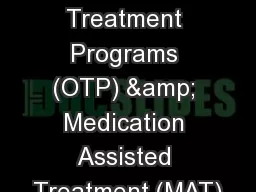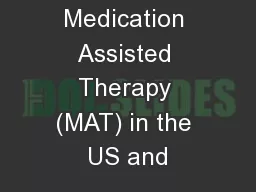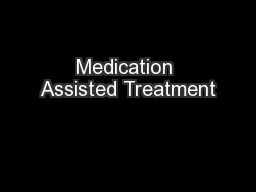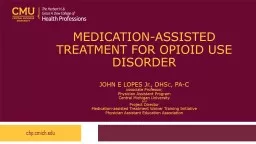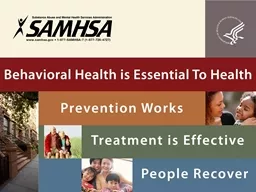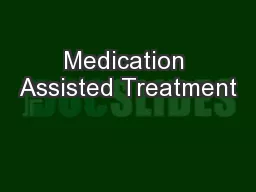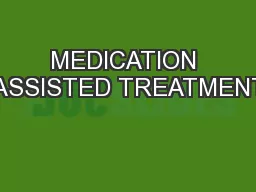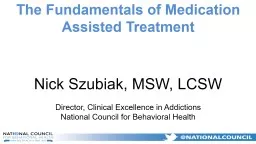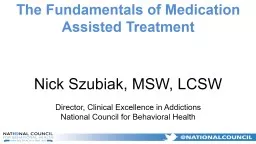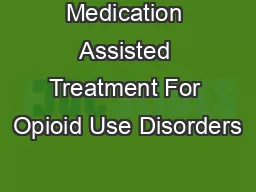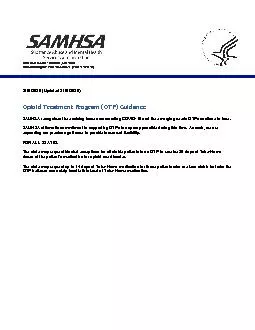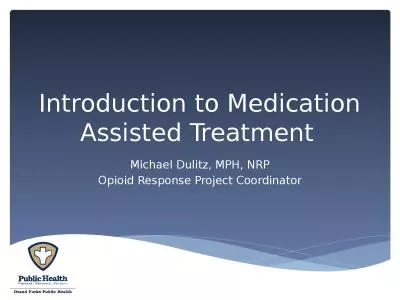PPT-Opioid Treatment Programs (OTP) & Medication Assisted Treatment (MAT)
Author : olivia-moreira | Published Date : 2018-09-20
IN ARMS September 26 2016 Prepared by Leslie Hulvershorn MD Medical Director Division of Mental Health and Addiction FSSA LeslieHulvershornfssaINgov Presented
Presentation Embed Code
Download Presentation
Download Presentation The PPT/PDF document "Opioid Treatment Programs (OTP) & M..." is the property of its rightful owner. Permission is granted to download and print the materials on this website for personal, non-commercial use only, and to display it on your personal computer provided you do not modify the materials and that you retain all copyright notices contained in the materials. By downloading content from our website, you accept the terms of this agreement.
Opioid Treatment Programs (OTP) & Medication Assisted Treatment (MAT): Transcript
Download Rules Of Document
"Opioid Treatment Programs (OTP) & Medication Assisted Treatment (MAT)"The content belongs to its owner. You may download and print it for personal use, without modification, and keep all copyright notices. By downloading, you agree to these terms.
Related Documents

